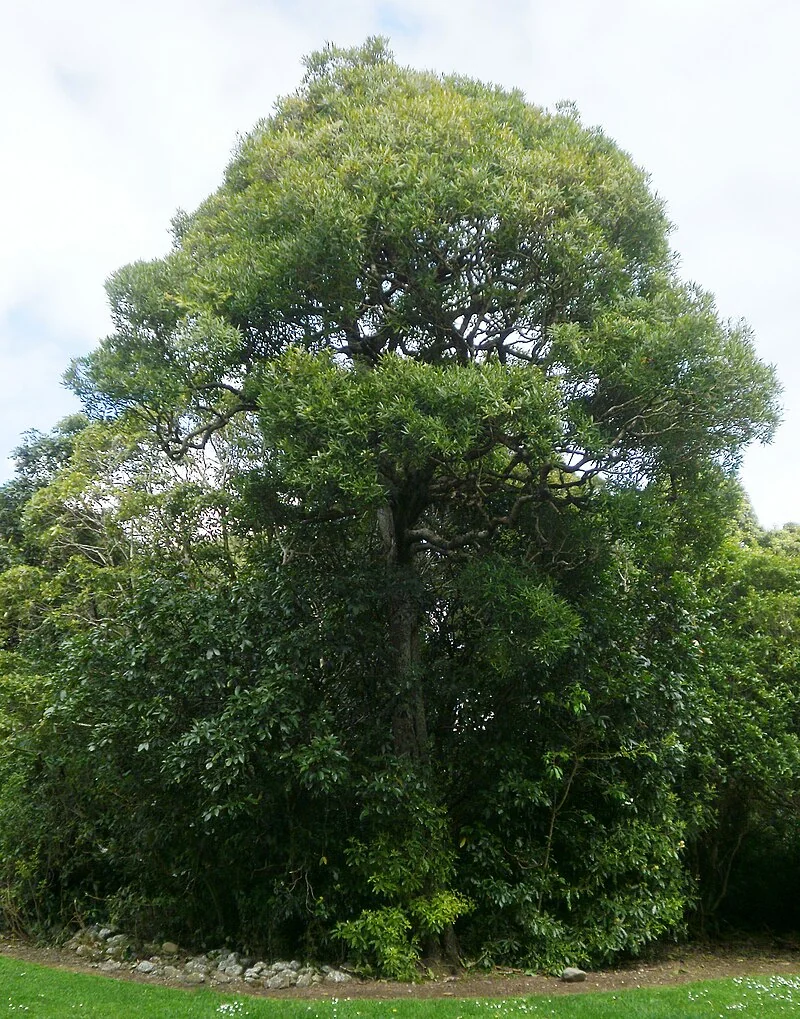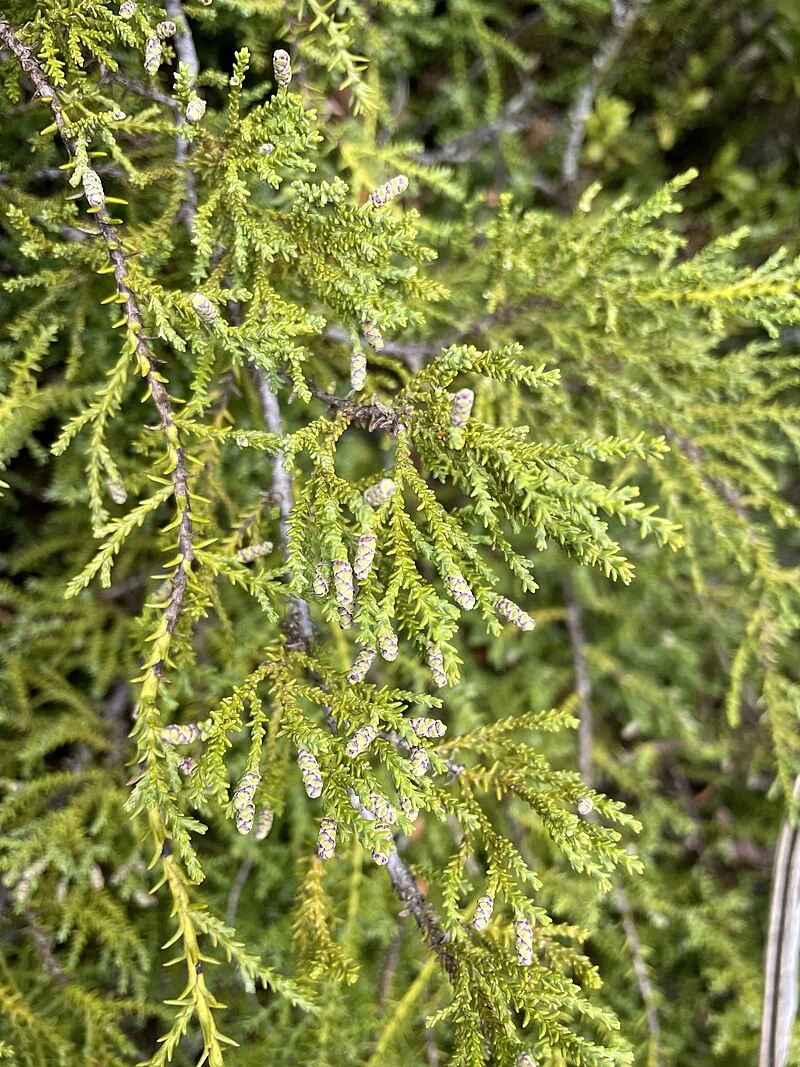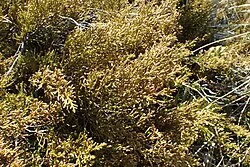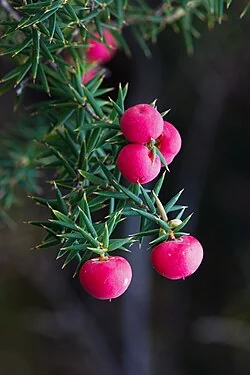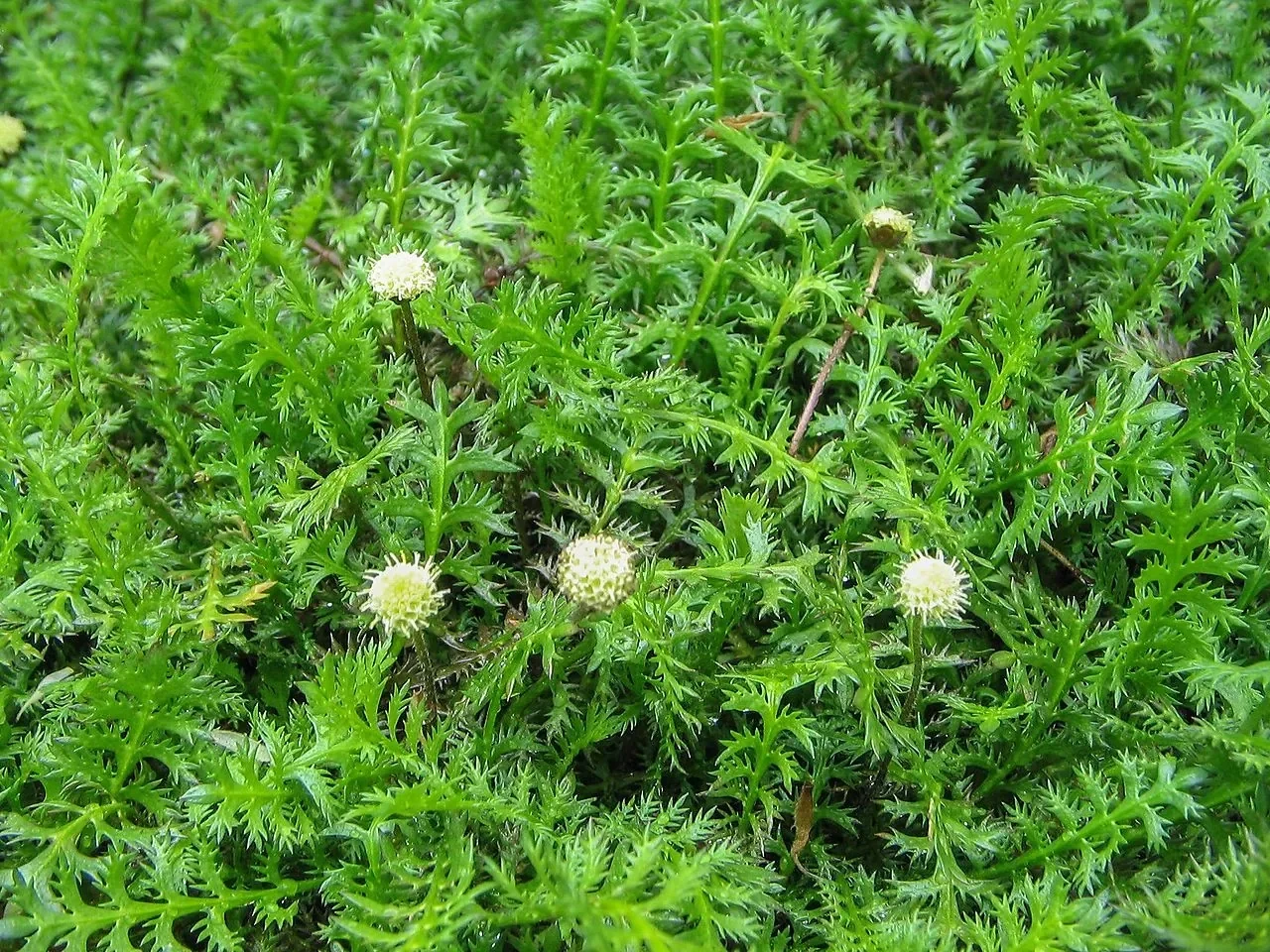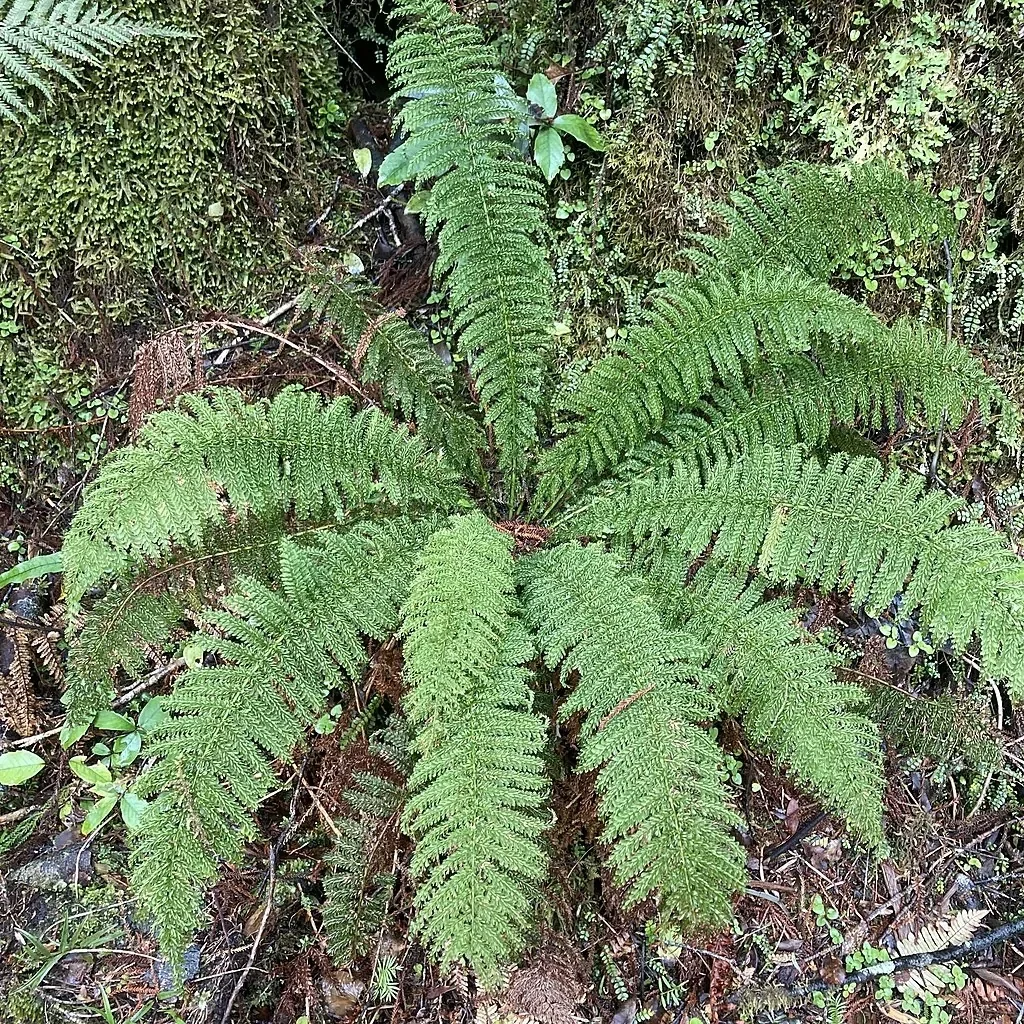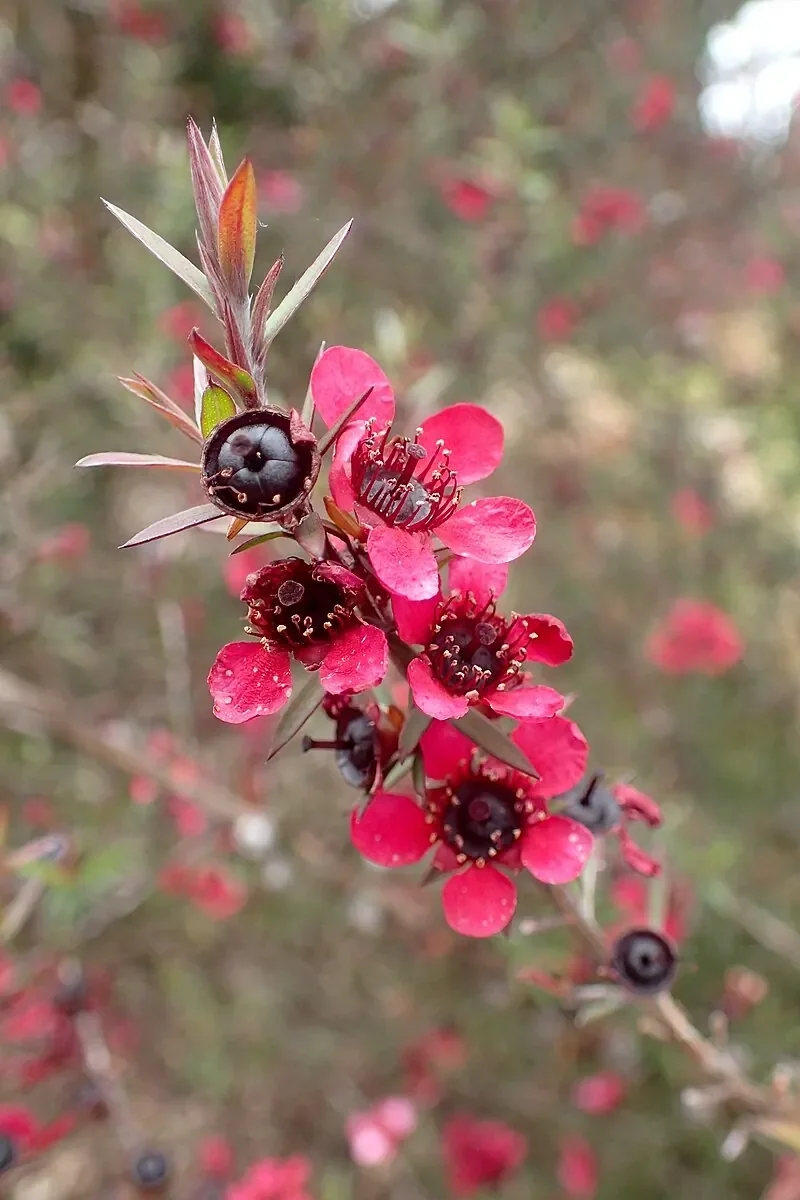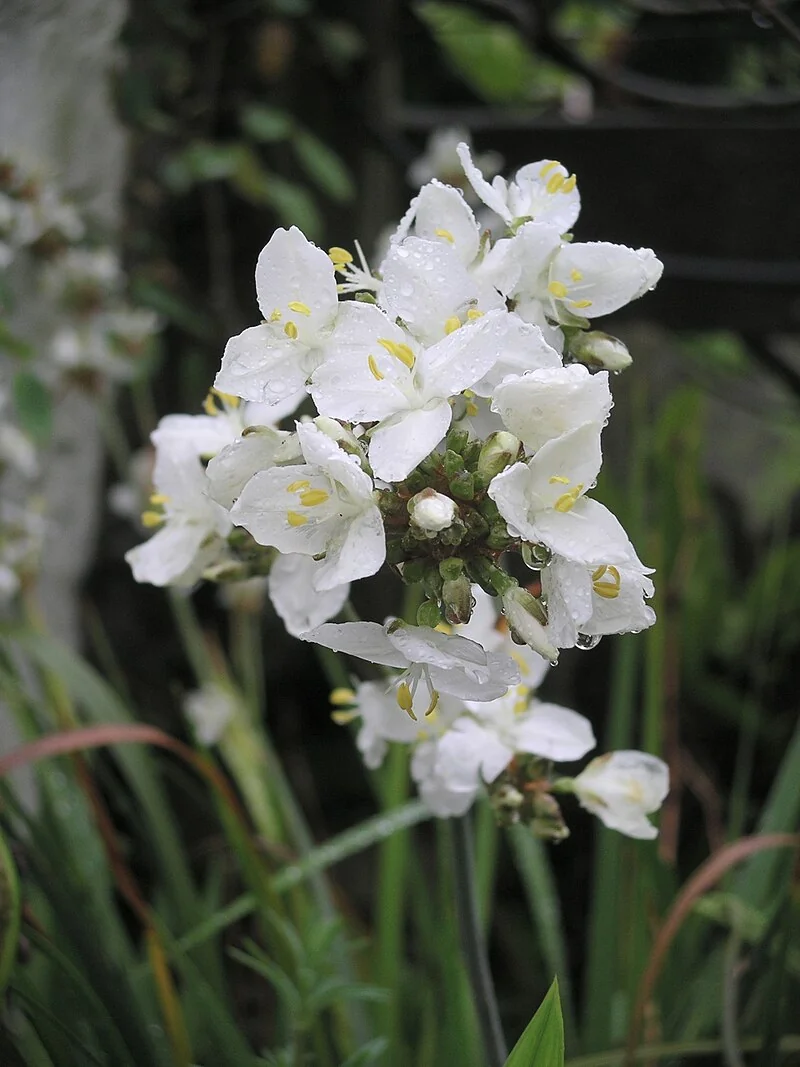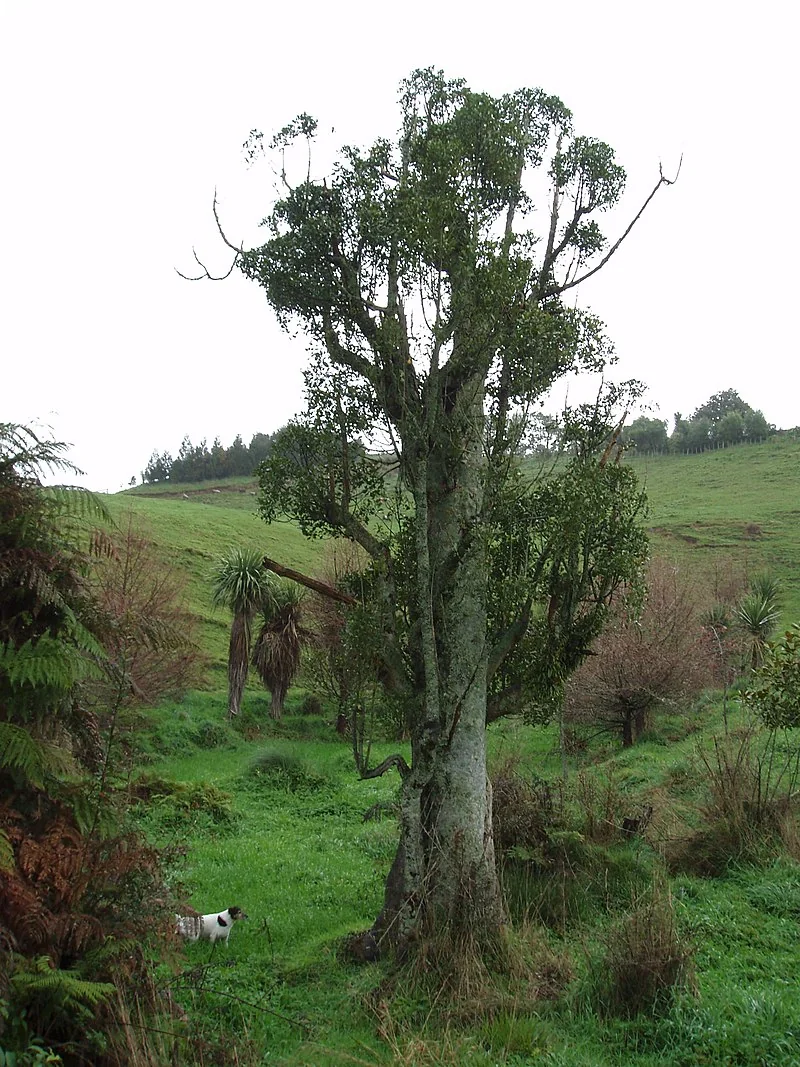
Pukatea
Laurelia novae-zelandiae
Explore more NZ native plant guides in our index.
Pukatea ( Laurelia novae-zelandiae) is a magnificent native New Zealand tree, renowned for its distinctive buttress roots, fragrant leaves, and its ability to thrive in wet, swampy conditions. This large evergreen tree is endemic to the North Island and northern South Island, typically found in lowland and riparian forests, often along stream banks and in poorly drained areas. Its impressive stature and unique root system make it a striking specimen tree for larger native plant gardens or wetland restoration projects. Pukatea is a resilient and ecologically important tree that adds a touch of primeval grandeur to any landscape, showcasing the rich biodiversity of New Zealand's forests.

Pukatea ( Laurelia novae-zelandiae) is a magnificent native New Zealand tree, renowned for its distinctive buttress roots, fragrant leaves, and its ability to thrive in wet, swampy conditions. This large evergreen tree is endemic to the North Island and northern South Island, typically found in lowland and riparian forests, often along stream banks and in poorly drained areas. Its impressive stature and unique root system make it a striking specimen tree for larger native plant gardens or wetland restoration projects. Pukatea is a resilient and ecologically important tree that adds a touch of primeval grandeur to any landscape, showcasing the rich biodiversity of New Zealand's forests.
Quick Facts
Tree Summary
| Scientific Name | Laurelia novae-zelandiae |
|---|---|
| Common Name | Pukatea |
| Family | Atherospermataceae |
| Height | Up to 35 m |
| Spread | Up to 10 m |
| Light | Partial shade to full shade |
| Soil | Moist to wet, fertile soils |
| Water Needs | High |
| Frost Tolerance | Moderate |
| Salt Tolerance | Low |
| Growth Rate | Medium to fast |
| Lifespan | Long |
Climate Best Suited to
Regional Suitability
Pukatea ( Laurelia novae-zelandiae) is native to the North Island and northern South Island of New Zealand, typically found in lowland and riparian forests, often in wet or swampy areas. it thrives in mild, temperate climates with high humidity and consistent rainfall. It prefers sheltered locations, protected from strong winds and harsh frosts. Its natural habitat includes stream banks, damp gullies, and poorly drained areas, indicating a preference for consistently moist to wet soil conditions. It can be successfully cultivated in similar temperate regions, provided it has good drainage and protection from extreme heat or prolonged severe frosts when young.
| City | Climate Suitability |
|---|---|
| Whangārei | Ideal |
| Auckland | Ideal |
| Hamilton | Ideal |
| Tauranga | Ideal |
| Rotorua | Ideal |
| Gisborne | Ideal |
| New Plymouth | Ideal |
| Napier | Ideal |
| Whanganui | Ideal |
| Palmerston North | Ideal |
| Wellington | Ideal |
| Nelson | Ideal |
| Christchurch | Ideal |
| Dunedin | Ideal |
| Invercargill | Ideal |
Natural Habitat
Swamp Forest Distribution
Understand the natural habitat of Pukatea ( Laurelia novae-zelandiae), which is found throughout the North Island and northern South Island of New Zealand, in lowland and riparian forests. This section details its geographical distribution, preferred environmental conditions, and the types of ecosystems where it naturally occurs.
- Widespread across the North Island and northern South Island.
- Found in lowland and riparian forests, often along stream banks and in poorly drained areas.
- Prefers sheltered sites with good air circulation.
- Thrives in partial to full shade.
Its broad habitat range highlights its adaptability and resilience, making it a fascinating subject for ecological study.
Plant Conservation Efforts
Conservation Status
While currently listed as 'Not Threatened', Pukatea ( Laurelia novae-zelandiae) is an endemic New Zealand species, and its conservation is important for maintaining the country's unique biodiversity. Its wide distribution and adaptability contribute to its stable status.
- Monitoring of wild populations to assess potential threats.
- Protection of diverse habitats where it naturally occurs.
- Cultivation in gardens helps to preserve genetic diversity.
- Public awareness of endemic species importance.
By growing Pukatea, gardeners contribute to the appreciation and informal conservation of this valuable native tree.
Detailed Growing Requirements
Advanced Growing Tips
A more in-depth look at the specific conditions and care practices required for successfully growing Pukatea ( Laurelia novae-zelandiae). This section provides comprehensive guidance for enthusiasts and professional growers aiming to cultivate this graceful native tree.
- Advanced soil preparation techniques for moist to wet, fertile conditions.
- Detailed light and temperature preferences, including considerations for sheltered sites.
- Specialized watering methods to maintain consistent soil moisture without waterlogging.
- Considerations for pruning to maintain desired size and shape.
Planting Guide
Best Time to Plant
The best time to plant Pukatea is during autumn or spring, when temperatures are mild and rainfall is more consistent. This allows the tree to establish its root system before the extremes of summer heat or winter cold.
Choosing a Location
Select a site with partial to full shade and moist to wet, fertile soil. Pukatea is ideal for planting in wetland areas, along stream banks, or in poorly drained areas where other trees might struggle. Ensure it has adequate space for its mature size.
Planting Steps
- Dig a hole twice the width of the root ball and the same depth.
- Gently remove the tree from its container, being careful not to disturb the roots.
- Place the tree in the hole, ensuring the top of the root ball is level with the surrounding soil.
- Backfill with amended soil, firming gently around the base of the tree.
- Water thoroughly immediately after planting to settle the soil.
- Apply a layer of organic mulch to help retain moisture and suppress weeds, keeping it away from the trunk.
Initial Care
Water regularly during the first 6-12 months to help establish a strong root system. Once established, Pukatea is reasonably low maintenance and requires less frequent watering, especially if planted in naturally wet areas. Protect young trees from strong winds and severe frosts if necessary.
Ecological Role
Wetland Ecosystem Importance
The ecological importance of Pukatea ( Laurelia novae-zelandiae) within its native New Zealand ecosystems is significant. Its berries provide a food source for native birds, and its unique buttress roots create microhabitats for various invertebrates, contributing to the local food web and biodiversity of its varied habitats.
- Berries provide a food source for native birds.
- Buttress roots create unique microhabitats for invertebrates.
- Contributes to biodiversity in diverse forest ecosystems.
As an endemic species, it is an integral part of the unique biodiversity that has evolved in New Zealand, supporting the delicate balance of its natural habitats.
Uses and Significance
Garden Uses
- Excellent specimen tree for larger gardens.
- Suitable for wetland restoration and riparian planting.
- Provides year-round interest with evergreen leaves.
- Attracts native birds to its flowers and fruit.
Landscaping Applications
Garden Design Uses
Pukatea ( Laurelia novae-zelandiae) is a magnificent and versatile tree for various landscaping applications, particularly in native and wetland gardens. Its impressive stature and unique buttress roots make it a valuable asset.
- Ideal as a specimen tree for larger gardens and parks.
- Excellent for wetland restoration and riparian planting projects.
- Provides year-round interest with evergreen leaves.
- Suitable for mass plantings or as an accent tree.
Its ability to thrive in wet conditions and its aesthetic appeal make it a popular choice for creating lush and beautiful native landscapes.
Seasonal Care Calendar
Spring
New growth emerges, and inconspicuous flowers may appear. This is an ideal time for planting new Pukatea specimens. Ensure consistent moisture for young trees and protect them from strong winds if necessary. A light feed with a balanced slow-release fertilizer can encourage vigorous growth.
- Ideal time for planting.
- Ensure consistent moisture for new trees.
- Light fertilization if needed.
Summer
Pukatea is actively growing during summer, followed by the development of seeds. Consistent watering is crucial, especially during dry spells, to prevent stress. Monitor for pests and diseases, though it is generally quite resilient.
- Active growth.
- Consistent watering is essential.
- Monitor for pests and diseases.
Autumn
Growth slows as temperatures cool. This is another good time for planting, allowing roots to establish before winter. Minimal care is required for established trees, but ensure they remain adequately hydrated.
- Good time for planting.
- Minimal care for established trees.
- Ensure adequate hydration.
Winter
Pukatea is evergreen and provides year-round interest. It is moderately frost-tolerant, but in very cold regions, young trees may benefit from some protection. Ensure good drainage to prevent root issues in wet conditions.
- Evergreen, provides year-round interest.
- Protect young trees from severe frost.
- Ensure good drainage.
When to Prune and How Much
Minimal Pruning
Pukatea generally requires minimal pruning to maintain its natural form. The primary reason for pruning is to remove dead or damaged branches, or to shape the tree as desired. Its natural growth habit is often quite attractive, so extensive pruning is rarely needed.
- Remove dead or damaged branches as needed.
- Light shaping to maintain desired form.
- Best done in late winter or early spring before new growth.
- Use clean, sharp tools.
Avoid heavy pruning, as this can stress the tree. Allow it to develop its natural, graceful canopy.
How to Grow Pukatea
Pukatea is a magnificent native New Zealand tree, renowned for its distinctive buttress roots, fragrant leaves, and its ability to thrive in wet, swampy conditions. This large evergreen tree is a striking specimen for larger native plant gardens or wetland restoration projects. Its impressive stature and unique root system add a touch of primeval grandeur to any landscape. Pukatea is a resilient and ecologically important tree that showcases the rich biodiversity of New Zealand's forests. Understanding its propagation methods is key to successfully growing this unique species.
From Seed
Propagating Pukatea from fresh seed is a viable method, though germination can be slow and may require stratification. Collect ripe seeds in late autumn or early winter. Clean the seeds thoroughly to remove any fleshy pulp. Sow the seeds in a tray filled with a well-draining seed-raising mix, lightly covering them. The seeds typically require a period of cold stratification (e.g., refrigerate for 2-3 months) to break dormancy. Maintain consistent moisture in the seed tray and keep it in a warm, sheltered location. Germination can take several weeks to months after stratification. Once seedlings have developed a few true leaves, they can be potted into individual containers and grown in a sheltered environment before planting out.
From Cuttings
Semi-hardwood cuttings are a reliable method for propagating Pukatea, ensuring that new plants retain the exact characteristics of the parent. Take 10-15 cm cuttings from healthy, semi-hardwood stems in late summer or early autumn. Remove the lower leaves and dip the cut end in a rooting hormone. Insert the cuttings into a well-draining propagation mix (e.g., sand and perlite). Keep the cuttings in a warm, humid environment, out of direct sunlight, perhaps under a plastic dome or in a propagator. Rooting typically occurs within 8-12 weeks. Once rooted, the new plants can be potted on and grown in a sheltered environment until they are ready for planting.
Pests and Diseases
Pukatea is generally a robust tree, but it can be susceptible to certain pests and diseases, especially if not grown in optimal conditions.
Common Pests
- Aphids: Can infest new growth. Treat with insecticidal soap or remove manually.
- Scale Insects: May be present on stems and leaves. Treat with horticultural oil or appropriate insecticides.
Common Diseases
- Sooty Mould: Often associated with scale insect infestations, it can cover leaves and reduce photosynthesis. Address the underlying pest issue.
- Root Rot: Caused by prolonged waterlogging in poorly drained soils. Ensure good drainage or plant in naturally wet areas it is adapted to.
Good garden hygiene, proper watering, and adequate air circulation are key to preventing most pest and disease issues. Regular inspection will help catch problems early.
Cultural Significance
Laurelia novae-zelandiae, commonly known as pukatea, holds significant cultural importance, particularly within Māori traditions in New Zealand.
Traditional Medicinal Uses (Rongoā):
- The tree's bark was extensively used in traditional Māori medicine (rongoā) for its analgesic properties. It contains an alkaloid called pukateine, which has properties similar to morphine and was first isolated in 1910.
- Māori used the bark to alleviate toothaches by holding pulped inner bark in the mouth.
- A decoction made from the bark was used to treat ulcers, general skin complaints, and sexually transmitted diseases (STDs).
- It was also used to create tonics for digestive disorders, including gastric ulcers and stomach pains. Research suggests pukateine may even have a role in treating Parkinson's disease.
Timber and Craft:
- Pukatea timber was valued for various uses. Māori crafted bowls, clubs, and paddles from its wood. It was also used to create figureheads for canoes.
- While the wood can become waterlogged, making it less ideal for large waka (canoes) where tōtara was preferred, its lightness made it suitable for river canoes.
- Early European settlers also utilized pukatea for boat building, weatherboards, and motor body construction. The wood is noted for being light, strong, difficult to split, and tending to dent rather than break upon impact.
Māori Proverbs and Spiritual Beliefs:
- Pukatea also features in Māori proverbs and spiritual beliefs. An old Māori proverb uses the different properties of pukatea and tōtara wood as an analogy for youth and old age, with the waterlogged pukatea representing the elderly.
- The hollows that form in the center of older pukatea trunks were sometimes used to conceal the bodies of deceased relatives to protect them from enemy raids.
- Furthermore, some individual pukatea trees were believed to possess the power to aid women in conception, with young women visiting these trees with a Tohunga (expert practitioner) to perform incantations.
Bonus Tip
Roots That Breathe
Pukatea is unique among New Zealand native trees for its distinctive root system. It develops large, plank-like buttress roots at its base, which help to stabilize the tree in its wet, often swampy habitat. Even more remarkably, it produces specialized breathing roots called pneumatophores, which grow upwards from the submerged roots to absorb oxygen from the air. These adaptations allow Pukatea to thrive in waterlogged conditions where other trees would quickly perish.
